Ways to Make Your HVAC System More Energy Efficient
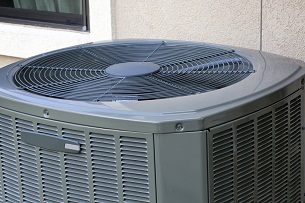
Upgrade Your Equipment
If your HVAC system is old and using out-of-date technology, the best thing you can do is replace it. Upgrading to a new energy efficient model may cost more up-front, but it will save you money in the long run. Be sure to look for the EnergyStar logo when buying your new equipment so you can be sure it is energy efficient.
Programmable Thermostat
You can also save money by purchasing and installing a programmable thermostat. This way, you can pre-set the temperature around the schedule of the people in your home. After all, there’s no point in having the heat turned up to 76 degrees Fahrenheit if nobody is home. By using the set-it-and-forget-it method, you won’t even have to think about the thermostat and you can still save money.
Clear the Vents
Your HVAC system won’t work very well if the vents are blocked. Re-arrange the furniture in the room to ensure nothing is blocking the air vents and ducts. You should also clean the air ducts regularly, as dust and debris can negatively impact its efficiency as well. Taking these simple steps will help preserve the airflow in your home.
Adjust the Temperature
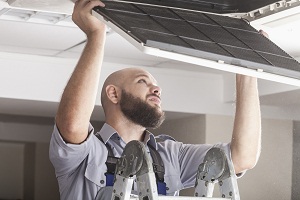
Improve the Home’s Insulation
You can also ensure your system is working efficiently by improving the home’s insulation. Poorly insulated homes lose more hot air in the winter and cold air in the summer, which means it will cost you more to keep your home at a comfortable temperature. Add insulation to your walls and windows, as well as around outlets, pipes, and ducts. Pay close attention to the attic and basement, as these spots are usually where homes lose the most heat or cold.
Change the Air Filter
This is a simple maintenance task that can make a significant difference. Air filters that are loaded with dust and debris will block the air from entering your home. Your system will run for longer and use more power to make your home comfortable. Be sure to clean dust out of the air filter every so often to keep your system functioning properly. You should also hire a professional to inspect the system every year and make sure it is as energy efficient as possible.
Signs That Your HVAC System Needs Repair

HVAC systems work hard to maintain a comfortable climate, and you likely have the electricity bills to show for it. HVAC units typically consume more energy than any unit in a business or residence, so its efficient operation is important. Regular maintenance by a professional technician is essential to avoid costly repairs.
Over time, the heating and air conditioning system will fail to work properly. Age, lack of maintenance, and wear and tear are a few of the factors that can contribute to a malfunction. There are many warning signs that can tell you if there is a performance problem with your system. Here are four signs that will make you want to contact your HVAC repair technician.
Poor Air Quality
An obvious sign that your unit is not working properly and is in need of repair is when the air conditioner blows warm air instead of cold air, or struggles to blow air into the room. Even if cool air does circulate, you may notice that the air quality is not cold enough for comfort. The coils may be dirty and need cleaning, or the compressor could be failing. If you notice this problem, you will want an HVAC expert to take a look at the unit.
Rising Bills
The heating and air conditioning system uses a great deal of energy. A sudden jump in the electricity bill that does not correspond with an increase in usage is a sign that the HVAC unit may be experiencing a problem and is due for repairs. You will likely notice this happening in older, less energy-efficient systems.
 Strange Smells and Sounds
Strange Smells and Sounds
If you switch on your heater or air conditioner and a pungent or unpleasant odor comes from the vents, you may want to contact a technician to diagnose and head off what could be real damage to the unit. That smell could be from a malfunctioning motor, or damage to the electrical wiring. The smell could be the result of mold growth somewhere in the system or the ductwork. If you become aware of bad smells from the ducts, then repairs to the unit will be necessary to safeguard the health and safety of your family or employees.
Moisture
Moisture or leaking in or around your HVAC system can indicate a minor issue, such as a clogged condensation tube, or something more serious, like leaking refrigerant. Wet areas around the unit are evidence that the unit is in need of immediate repair.
Signs of problems with your heating and air conditioning system requires prompt response and repair. A failing or broken-down system will cost money as well as cause overall discomfort to the people in your home or place of business. If you notice signs of a problem, contact your HVAC repair technician right away.
How Useful Is a Carbon Monoxide Detector?
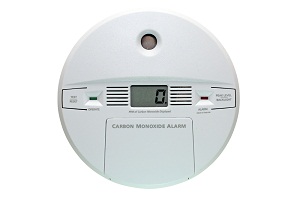
People are physical beings with five very useful senses. As such, they have a mindset that if they can’t see, touch, taste, hear, or smell something, it doesn’t exist. In the case of carbon monoxide, not only does it exist, it has the power to kill. When inhaled over time, flu-like symptoms develop. But left untreated, irreparable damage can be done to the brain and lungs. In the saddest cases, suffocation causes death.
What Is Carbon Monoxide?
Carbon monoxide, the gas known as the “silent killer,” is a residual product created when natural fuels aren’t fully consumed. Whether it’s wood, gasoline, coal, propane, heating oil, or natural gas, when they don’t fully burn, the byproduct is carbon monoxide. When we breathe in this noxious gas, our bodies react. Carbon monoxide poisoning is the number one cause of death by accidental poisoning in the United States, killing nearly 500 people a year and sending another 15,000 to the emergency room for treatment.
Regardless of where you live, your home employs at least a few of these products to keep you comfortable. Sadly, when a machine, like a water heater, malfunctions over time, it may be too late to take saving action.
How Will I Know It’s in My House?
Detecting carbon monoxide requires a specialized detector separate from your smoke alarms. CO can be present in your home without an active fire. There are a few types of systems available on the current market.
 What Is the Right Detector for Me?
What Is the Right Detector for Me?
- Biomimetic
This is a gel-based detector connected to a sensor. When carbon monoxide is present, the gel absorbs it, causing a chain reaction which changes the color of the gel. The color change triggers the safety alarm.
- Metal Oxide Semiconductor
This is a more technological reaction. A small chip is embedded in the detector that controls the amount of electricity flowing through the device. When carbon monoxide is detected, the electrical conductivity shifts, triggering the safety alarm.
- Electrochemical Sensor
This blend of electric and chemical science works together to sense carbon monoxide in your home. When the electrodes submerged in a chemical solution begin to increase their momentum, it triggers the safety alarm.
Before purchasing a carbon monoxide detector, do your research. Check with your state and see if they require a certain type of unit. Speak with your local fire marshal and see what they recommend based on your location. Choose the right fit for your home and install them. Place one on each floor, with particular attention to placement outside bedrooms. This simple action can save your family’s life.



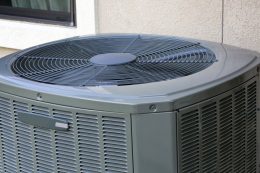
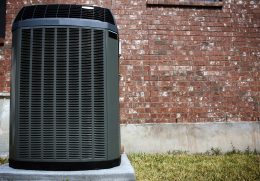


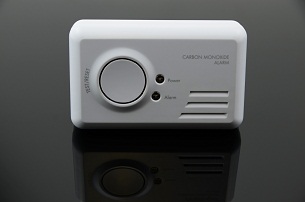

Recent Comments